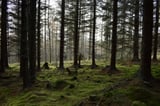Ice Age Resilience: Study Reveals High Genetic Diversity in Key European Tree Species
October 14, 2024
Recent research published in Nature Communications reveals that certain tree species maintained high genetic diversity through ice age cycles, challenging previous assumptions of low diversity during these periods.
The study, led by Uppsala University in Sweden, involved a collaboration of scientists from 22 European research institutes.
Researchers analyzed DNA from approximately 3,500 trees across 164 different populations in Europe, focusing on species crucial to the forest ecosystem and economy.
In Sweden, the study concentrated on Norway spruces, Scots pines, and silver birches, which are vital for biodiversity and the timber economy.
The research examined seven key tree species, including European beech, Maritime pine, Sessile oak, Silver birch, Scots pine, Norway spruce, and Black poplar.
Findings indicate that ice age cycles had minimal impact on the genetic diversity of these species, attributed to their long generation times and effective pollen dispersal.
The ability of tree pollen to travel thousands of kilometers contributed to the high genetic diversity observed, enhancing resilience to habitat changes.
First author Pascal Milesi emphasized that this research offers a hopeful perspective for forest biodiversity management amid the ongoing biodiversity crisis and climate change.
Despite the positive findings regarding these tree species, scientists warn that many other organisms face significant threats from climate change, with ongoing biodiversity loss expected without immediate action.
The study suggests that historical evolutionary processes may help these trees cope with current climate change challenges.
During the last glacial period, approximately 10,000 years ago, tree distribution areas were significantly reduced, yet genetic diversity remained high, indicating resilience to drastic habitat changes.
Currently, forests cover about 38% of Europe’s land area, a significant decrease from around 65% approximately 6,000 years ago.
Summary based on 6 sources
Get a daily email with more World News stories
Sources

Phys.org • Oct 14, 2024
Adaptability of trees persists after millions of years of climate change, finds study
ScienceDaily • Oct 14, 2024
Adaptability of trees persists after millions of years of climate change
EurekAlert! • Oct 14, 2024
Adaptability of trees persists after millions of years of climate change
Cosmos • Oct 14, 2024
Trees continue to adapt through millions of years of climate change